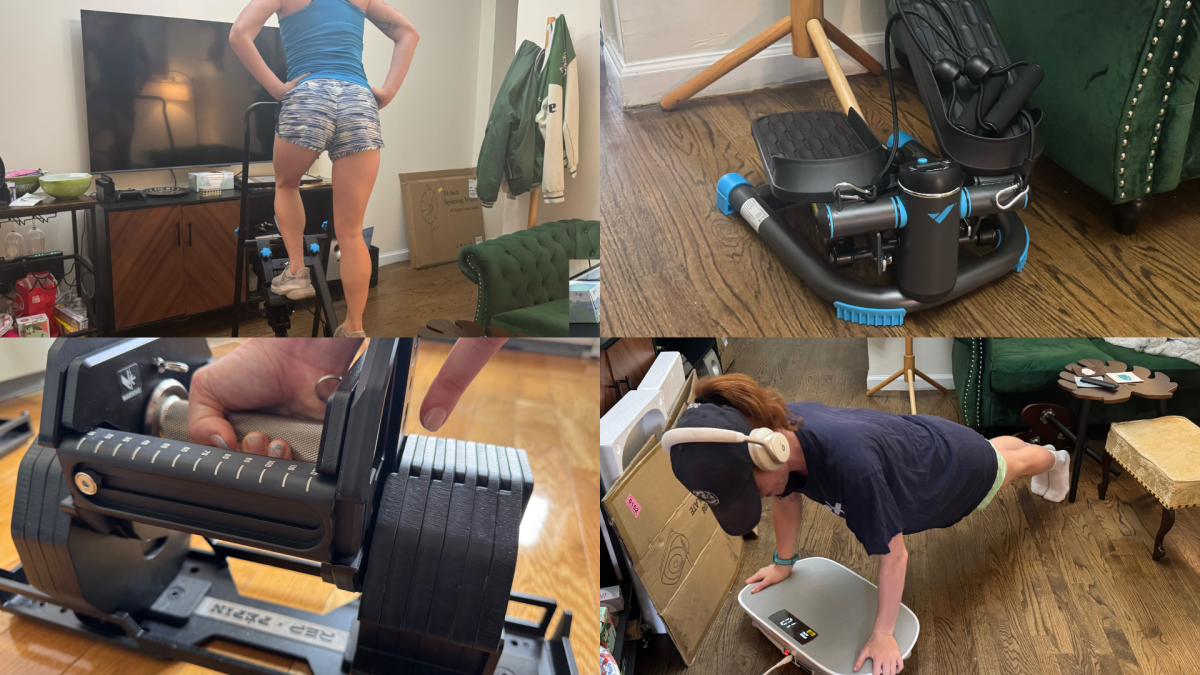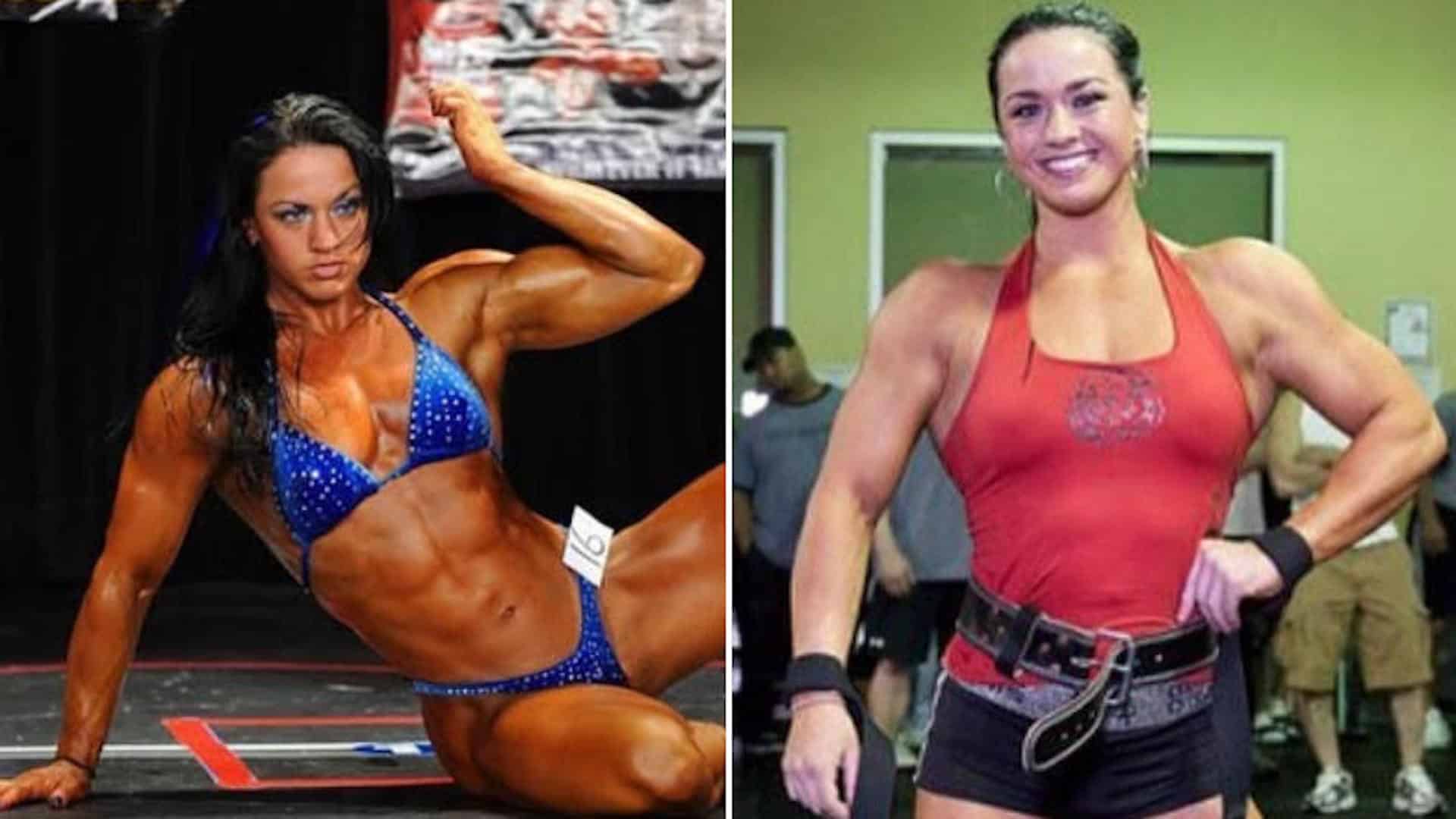We may earn a commission from links on this page.
From adjustable dumbbells to mini-cardio machines to whole-body vibration plates, social media is flooded with equipment that looks amazing in 30-second videos. But after reviewing a range of these trendy home gym items, I’ve learned that the reality often doesn’t match the marketing hype.
And as someone who dreams of owning a fully stocked home gym one day, I think it’s important to understand why so many trendy fitness products fall short of expectations. It’s simple: Most viral gym equipment is designed to sell, not to deliver long-term fitness results. The marketing focuses on convenience, novelty, and quick fixes—great for marketing; horrible for fitness principles that actually work.
The most successful home gyms might look boring to you. When you’re shopping around, you want to look for versatile, proven equipment that may not be Instagram-worthy but gets the job done day after day, year after year. Here’s what you need to know before you click “buy now” on that trendy fitness gadget, and what sort of specifications to look for instead.
If there’s no adjustable resistance, skip it
Many viral products—especially cardio-driven ones—promise to “transform your body,” but lack the one feature necessary for that goal: resistance. Muscle building requires progressive overload. You need to gradually increase resistance, weight, or intensity over time. Without it, there’s no chance of dramatically reshaping your physique in the ways the viral marketing videos often claim. The physics of muscle growth simply don’t support the “transform your body” promises that make these devices so appealing on social media.
What to look for instead:
-
Progressive overload capability: Can you consistently increase resistance over time? If not, you’ll plateau quickly.
-
Resistance range: Does the equipment accommodate both beginners and advanced users? A good home gym should grow with you. Otherwise, there’s no clear path for progression beyond the starter level.
-
Consistent resistance: For cardio, don’t bother with a stair stepper that only has one mode. You’re better off with a walking pad with substantial incline. For strength, all sorts of free weights, cable systems, and quality adjustable dumbbells provide consistent resistance throughout the movement.
The specs behind “space-saving” claims
That “compact” home gym that folds up probably still takes up significant floor space and needs to be assembled every time you use it. It’s all too easy to abandon your fitness routine simply because accessing equipment becomes a chore. Or perhaps you thought you were buying a product one size, only to be misled by doll-sized models in product pictures.
I love the Merach W50 walking pad, but it takes up a good chunk of dedicated floor space. I love the Nüobell adjustable dumbbells, but if I store them in my closet, it’s a hassle to get them out for use again. Before you buy a piece of equipment, ask yourself: Where will this live when not in use? Will I realistically assemble this every time I want to work out? Do the specs actually match my intended storage space?
What to look for instead:
Ease of use and your workout experience
Exercises that look simple in viral videos might actually require specific technique, setup, or body positioning that isn’t immediately obvious. I’ve found that any equipment claiming to enable “hundreds of exercises” often does many things poorly, rather than a few things well. True versatility means the equipment excels at fundamental movement patterns, like with adjustable dumbbells or adjustable benches.
I promise you, no fitness hack is going to come from some newly invented range of motion you’ve never seen any other human attempt in a gym before. In fact, that’s a pretty good rule of thumb: If you wouldn’t be caught dead using a device at a gym, don’t waste your money. Similarly, anything that looks too easy, too good to be true—say, vibrating away your fat—always will be just that.
What to look for instead:
What do you think so far?
-
Intuitive setup: You shouldn’t need to watch multiple YouTube videos to figure out basic exercises.
-
Clear resistance indicators: Like I explain above, you should know exactly how much weight or resistance you’re using.
-
Stable platform: Equipment that wobbles, slides, or requires constant readjustment kills workout momentum, or even poses safety risks.
-
Comfortable contact points: Handles, pads, and straps that cause discomfort will certainly derail your routine.
Build quality and durability
Many trendy fitness items are manufactured quickly and cheaply to capitalize on social media buzz. They’re designed to look good in videos and photos, not to withstand daily use over months and years.
So how can you spot red flags online? I’d keep an eye out for tell-tale signs like plastic components in high-stress areas, no clear weight limits, warranties under one year, and suspiciously recent company formation (check when the brand was established).
What to look for instead:
-
Weight capacity: Does it exceed your body weight plus any additional resistance?
-
Materials: Steel and quality plastics last; thin metals and cheap polymers don’t.
-
Moving parts: Fewer moving parts generally mean fewer failure points.
-
Warranty and support: Established fitness companies stand behind their products.
-
No upgrades needed: Do you need additional purchases to make it functional? Avoid some $99 “complete home gym” that requires $200+ in additional resistance modules, accessories, or upgrades to be truly functional.
What you actually need in your home gym
The most effective home gyms are often built around unglamorous, proven equipment. Think of these are your foundation pieces:
-
Adjustable dumbbells or a barbell with plates: These provide true progressive overload.
-
A sturdy bench: Enables dozens of exercises.
-
Standard cardio: Opt for a classic treadmill or walking pad before anything that claims to “hack” cardio, like a mini-stepper.
-
Quality floor space: Sometimes bodyweight exercises are the answer!
From there, as you build out your home gym, ask yourself these questions before purchasing any trendy equipment:
-
Will I realistically use this three times per week for six months?
-
Does this provide a clear path for progression as I get stronger?
-
Can I try this type of exercise with equipment I already own or at a gym first?
-
Am I buying this because it works, or because the marketing was compelling?
-
What problem does this solve that simpler equipment couldn’t address?
The bottom line
The fitness industry thrives on selling solutions to problems you didn’t know you had. The truth is that effective home fitness comes down to consistency with fundamental movements, not revolutionary equipment. The best home gym equipment is what you’ll actually use regularly, can progress with over time, and fits sustainably into your life and space.
Before falling for the next viral fitness gadget, remember that countless people have built impressive strength and fitness with basic, unglamorous equipment. Sometimes the boring choice is the right choice. Your future self will thank you for choosing function over flash, and results over viral appeal.




